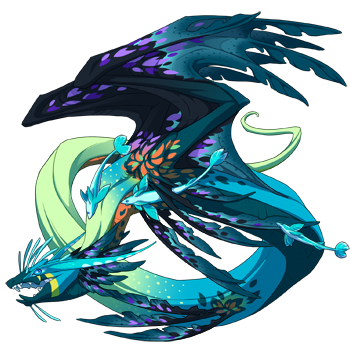

Faxonius
(#93604961)
Level 1 Undertide
Click or tap to view this dragon in Predict Morphology.
Energy: 47/50

Expand the dragon details section.
Collapse the dragon details section.
Personal Style

Ancient dragons cannot wear apparel.
Skin
Scene
Measurements
Length
15.05 m
Wingspan
18.09 m
Weight
4275.46 kg
Genetics
Cerulean
Cinder (Undertide)
Cinder (Undertide)
Teal
Blaze (Undertide)
Blaze (Undertide)
Cyan
Remora (Undertide)
Remora (Undertide)
Hatchday
Breed
Eye Type
Level 1 Undertide
EXP: 0 / 245


STR
6
AGI
5
DEF
8
QCK
6
INT
6
VIT
8
MND
6
Lineage
Biography




Faxonius palmeri (formerly Orconectes palmeri)

Gray-Speckled Crayfish
Description: The gray-speckled crayfish is gray or grayish-tan with numerous greenish-black speckles and blotches on the pincers, carapace, and abdomen. A pair of large blotches are present near the back of the head, and another pair occur near the junction of the carapace and abdomen. The fingers often have conspicuous cream-yellow tips. The carapace is not separated at its middle by a space (areola). The gray-speckled crayfish is the only common Faxonius in the southeastern lowlands. Other typical crayfish of the region have longer, more slender pincers, and none have the pattern of dark paired blotches described above.
Life Cycle: Most adults molt in late summer through fall, after which males are in breeding condition. The breeding season continues through spring. In about March or April, males revert to the nonbreeding condition, and females produce eggs. Egg-carrying females hide in areas of deep debris or beneath rocks. The young do not become completely independent of the female until after their third molt. Some can reach adult size by August; others overwinter as juveniles and mature the following spring.
Sources: MDOC





Click or tap a food type to individually feed this dragon only. The other dragons in your lair will not have their energy replenished.
This dragon doesn't eat Insects.
This dragon doesn't eat Meat.
Feed this dragon Seafood.
Feed this dragon Plants.
Exalting Faxonius to the service of the Tidelord will remove them from your lair forever. They will leave behind a small sum of riches that they have accumulated. This action is irreversible.
Do you wish to continue?
- Names must be longer than 2 characters.
- Names must be no longer than 16 characters.
- Names can only contain letters.
- Names must be no longer than 16 characters.
- Names can only contain letters.








